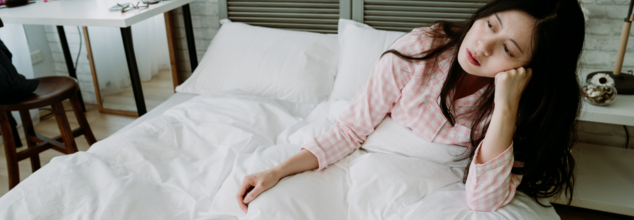- Health Conditions A-Z
- Health & Wellness
- Nutrition
- Fitness
- Health News
- Ayurveda
- Videos
- Medicine A-Z
- Parenting
- Web Stories
Watching Your Energy Dip In Winters? Effective Ways To Combat Winter Downers All Season

Winter Sluggishness And Remedies (Credit-Canva)
Feeling sluggish during the winter months is common. The urge to remain in bed and be as unproductive as possible is something many of us have to fight every morning just so that we can make it to our respective obligations like classes, office jobs etc. And these are very subtle changes that can make you feel like you are doing something wrong, but it is in fact just the weather that is making you feel this way. Once you figure out the cause, you can work to fix the issue. Now, there are many reasons why one feels like this when winter season arrives.
Shorter days and less sunlight affect our circadian rhythm, leading to increased melatonin production, which can cause fatigue. Fortunately, there are effective strategies to combat this seasonal slump. But why does this happen?
Why Do We Experience Dip In Our Energy During Winter?
Winter's shorter days and colder weather can drain your energy in several ways. Less sunlight throws off your body clock, making you feel tired and want to sleep more. Basically, your body does not understand why there is less light and tries to make up for it by sleeping and resting more. This cycle is similar to when you are experiencing some mental health issues, but your body tries to fix it by sleeping more as sleeping helps you heal your body. Bad weather often means less exercise, which also lowers energy. Some people experience Seasonal Affective Disorder (SAD), a type of depression that causes low energy and disinterest in usual activities. Finally, less sunlight can lead to low vitamin D, which is linked to fatigue. Here are some ways to combat this lack of energy
Prioritize Sleep
Getting enough quality sleep is crucial for both physical and mental well-being, directly impacting energy levels. Aim for around seven hours per night. Establishing a regular sleep schedule and ensuring a cool, comfortable bedroom environment can significantly improve sleep quality.
Try Light Therapy
Light therapy, using a specialized light box that mimics natural sunlight, can help regulate melatonin and serotonin, hormones affected by reduced winter sunlight. This can effectively boost energy and improve mood, even for those without a SAD diagnosis.
Engage in Physical Activity
Regular physical activity is a powerful way to boost energy, improve mood, and enhance overall health. Aim for at least 150 minutes of moderate-intensity exercise and two days of strength training each week to increase blood flow and release energizing endorphins.
Pay Attention to Nutrition
A balanced and nutritious diet provides the essential fuel and nutrients your body needs for sustained energy. Focus on consuming complex carbohydrates, lean protein, healthy fats, fiber-rich foods, and plenty of vitamins and minerals while staying well-hydrated.
Volunteer Your Time
Helping others through volunteering can provide a significant boost to both mood and energy levels. This selfless act activates the brain's reward system, releasing feel-good chemicals and providing a sense of purpose and fulfillment.
Maintain Social Connections
Maintaining strong social connections is vital for both mental and physical health, positively impacting energy levels. Spending quality time with friends and family can combat feelings of loneliness and improve overall well-being.
Address Vitamin/Mineral Deficiencies
Deficiencies in key vitamins and minerals, particularly vitamin D and B12, can significantly contribute to fatigue and low energy. Consult a healthcare professional for testing and personalized advice on supplementation if necessary.
Could Weight Loss Jabs Really Put Your Pancreas At Risk? Symptoms, Causes And Treatments You Must Know

(Credit-Canva)
As the number of people reporting pancreatic issues after taking the weight loss and diabetic jabs increases, health officials have launched an investigative study to figure out the unexpected side-effects of the drug.
In the UK, the Medicines and Healthcare products Regulatory Agency (MHRA) and Genomics England are asking anyone who was using these shots and ended up in the hospital with a sudden pancreas problem called acute pancreatitis to get in touch. Hundreds of people have reported pancreas issues after taking drugs like Mounjaro, Ozempic, and Wegovy, but doctors haven't yet proven that the shots caused these problems.
What Is The Goal Of This Study?
The study is part of the MHRA's Yellow Card scheme. This system lets anyone report a problem with a medicine, vaccine, or medical device, which helps doctors find safety issues early. People aged 18 and older who had a serious reaction to these weight loss shots (which are also used for type 2 diabetes) should report it on the Yellow Card website.
They'll then be asked if they want to join the study. This study will check if some people's genes make them more likely to get acute pancreatitis when taking these medicines. Patients will give more information and a saliva sample, hoping to reduce these side effects in the future.
What has The Study Found So Far?
As of May 13 this year, 10 deaths from pancreatitis in people using weight loss drugs were reported to the Yellow Card website, though other health factors might have been involved. It's tough to track exact user numbers since many buy these drugs online without a prescription. While health officials suggest these shots can aid obesity efforts, they caution that they're not a "magic solution" and often cause side effects like nausea, constipation, or diarrhea. The MHRA also warned that Mounjaro could reduce the effectiveness of birth control pills for some users.
What Is Pancreatitis: Acute & Chronic?
Pancreatitis is inflammation of the pancreas, and this can either be acute or chronic. Finding out whether one has pancreatitis as well as getting it under control is very important as if left unchecked, it can lead to long-term damage and other complications.
As you may know, our pancreas makes important digestive enzymes as well as insulin, which helps us break down glucose components and transform it into energy. Pancreatitis happens when the pancreas enzymes damage the pancreatic tissue itself.
The key difference between acute and chronic pancreatitis is that they are actually different conditions. According to a 2021 study published in the Cureus journal,
Acute Pancreatitis
Acute pancreatitis is a sudden, short-term inflammation of the pancreas. When someone has acute pancreatitis, they usually feel severe pain in the upper part of their belly, either in the middle or on the right side. This type of pancreatitis often comes on quickly and, with proper treatment, can resolve. Here are the symptoms, causes and treatment options, according to National Health Services UK.
Symptoms
Acute pancreatitis is a sudden, short-term swelling of your pancreas. The most common signs are severe, sudden pain in the middle of your stomach. You might also feel or be sick, and have diarrhea.
Causes
Acute pancreatitis happens when digestive chemicals inside your pancreas start to attack the organ itself. It's most often linked to two main things: gallstones, which cause about half of all cases, and drinking alcohol, which is behind about a quarter of cases. You can lower your risk by drinking less alcohol and making diet changes to prevent gallstones
Treatment
Treatment for acute pancreatitis focuses on supporting your body while the swelling goes down. You'll usually need to stay in the hospital for fluids through a vein, pain relief, food support, and oxygen. Most people get better within a week and can leave the hospital in 5 to 10 days, though severe cases might take longer due to complications.
Chronic Pancreatitis
Chronic pancreatitis is a long-lasting inflammation of the pancreas that often gets worse over time. Unlike acute pancreatitis, the symptoms of chronic pancreatitis can be much broader. People might have ongoing belly pain, but they can also show signs that their pancreas isn't working properly. This can lead to problems with digestion and even diabetes.
Symptoms
Chronic pancreatitis means your pancreas has long-lasting swelling. The main symptom is repeated, severe stomach pain, usually in the middle or left side, that can spread to your back. This pain is often described as burning or shooting and can last for hours or days, sometimes without a clear trigger.
As the condition worsens, these painful episodes might happen more often and be more severe. Eventually, you might feel a constant, dull pain in your belly even between bad episodes, especially if you keep drinking alcohol.
Causes
The most common reason for chronic pancreatitis is drinking too much alcohol for many years. This can cause repeated attacks of sudden pancreatitis, leading to more and more damage. In children, cystic fibrosis is the most common cause. Other less common causes include smoking, your immune system attacking the pancreas, genetic problems, injury, gallstones blocking ducts, or radiation. Sometimes, no cause is found.
Treatment
The damage to your pancreas from chronic pancreatitis is permanent, but treatment can help manage the condition and symptoms. Doctors usually advise stopping alcohol and smoking. You'll also get medicine to relieve pain. In some cases of severe pain, surgery might be an option to help control the condition and improve your quality of life.
You Don't Need 10,000 Steps To Reduce Heart And Cognitive Risk - Here's The Exact Number Of Steps You Need

(Credit-Canva)
All doctors agree on one thing; walking is great for your health. It is an often overlooked aspect of exercising, but even a quick 10-minute brisk walk can do wonders! Walking is an assessable exercise that can easily fit into anyone's daily routine through actions like walking to your place of work or walking during break etc. It helps your heart and might even lower your risk of dementia. The NHS (National Health Service) in the UK constantly reminds us how beneficial walking is, proving it's a powerful way to stay healthy without needing fancy equipment or intense workouts.
Many people aim for 10,000 steps a day, this usually means walking about five to eight kilometers, taking one to two hours. But where did this number come from? Harvard Health explains that the 10,000-step goal actually became popular because of an old advertising trick. It was tied to the 1964 Olympics and a Japanese step counter called "Manpo-kei," which means "10,000-step meter." The company cleverly used the fact that the Japanese symbol for "ten thousand" looks a bit like a person walking.
How Many Steps Do You Really Need In A Day to Stay Healthy?
Scientists have been trying to find the perfect number of steps. A 2022 study published in the JAMA Network found that walking anywhere from 3,800 to 9,800 steps daily could lower your risk of dementia. This study suggested that just under 10,000 steps, especially taken at a fast pace (around 112 steps per minute), might be ideal for avoiding dementia.
But you don't have to hit 10,000 steps to benefit! A large review of many studies showed that as few as 2,337 steps a day could reduce your risk of dying from heart problems. And walking 3,867 steps could lower your risk of death from any cause. For every extra 1,000 steps you take, your risk of dying drops by 15%.
Ideal Step Count As You Age
The ideal number of steps can change based on your age. If you're under 60, studies suggest aiming for 7,000 to 13,000 steps. For those 60 and older, the biggest health benefits were seen when walking between 6,000 to 10,000 steps. Other research showed that walking more than 2,200 steps (about one mile) was linked to living longer and having less heart disease. For women over 60, walking 6,000 to 7,500 steps lowered their risk of death. For younger people, the benefits didn't really increase much beyond 8,000 to 10,000 steps.
Why Walk Faster May Be More Beneficial?
It's not just about how many steps you take; how fast you walk is also important. A recent study found that walking at a brisk pace could lower your risk of heart rhythm problems. The researchers said a slow pace was under 3 mph, an average pace was 3-4 mph, and a fast pace was over 4 mph. Even when considering other factors, walking at an average or fast pace was linked to a 35% to 43% lower risk of irregular heartbeats compared to walking slowly. So, walking faster can make your heart even healthier.
Can Airborne Fungi Predict COVID and Flu Outbreaks? New Research Says Yes

Credits: Canva
A recent study presented at the American Society for Microbiology's annual meeting (ASM Microbe 2025) in Los Angeles has uncovered a surprising link between airborne fungal spores and short-term spikes in flu and COVID-19 cases. The research, conducted by scientists from Lynn University in Florida, suggests that monitoring outdoor levels of fungal spores could provide an early warning system for potential outbreaks.
Not Just Human Contact: Could Fungi Be the Missing Link in Outbreak Prediction?
Traditionally, respiratory illnesses like flu and COVID-19 have been associated mainly with human-to-human transmission. But this new research introduces an environmental twist: airborne fungal spores — microscopic particles released by fungi into the air — may play a significant role in triggering infection surges.
Researchers found that when levels of fungal spores in the outdoor air increased, there was a corresponding rise in COVID-19 and flu infections in the days that followed. What’s more, the relationship was strong enough that statistical and machine learning models could predict these spikes with a high degree of accuracy.
Also Read: COVID Vaccines Labels To Be Revised To Indicate Rare Heart Side Effect, Says FDA
Interestingly, the same predictive relationship did not hold true for pollen, another common airborne particle. This indicates that fungal spores may have a more specific and direct impact on respiratory health than previously assumed.
What Did Puerto Rico's Tropical Data Reveal About Outbreaks?
The research team focused their study on two major health regions in Puerto Rico — San Juan and Caguas — collecting data from 2022 to 2024. They tracked the daily incidence of flu and COVID-19 diagnoses alongside environmental measurements of fungal spores and pollen.
Using both traditional statistical analysis and machine learning models, they examined whether spikes in fungal spore concentrations could predict increases in infections within the same week or the following week — a concept known as a lag effect. The results were striking: in many instances, elevated levels of fungal spores were followed by noticeable jumps in flu and COVID-19 cases.
Public Health Planning Just Got Smarter With This Predictive Tool
“This research gives us a new lens through which to view respiratory virus outbreaks,” said Felix E. Rivera-Mariani, Associate Professor of Biochemistry at Lynn University and lead researcher on the study. “By monitoring environmental data like fungal spores, we can potentially issue earlier warnings and protect high-risk communities.”
Rivera-Mariani emphasized that this approach could be especially useful in the fall — a season that already sees increased viral transmission — when fungal spore levels are often high due to decaying plant matter and damp conditions.
Also Read: Childhood Trauma Increases The Risk Of Poor Academic Performance - Even If It Is Just One Instance
He added that this discovery highlights a broader message: “Environmental triggers, not just interpersonal contact, may influence how and when people get sick. That insight could help shape future public health responses and inform protective guidelines, particularly in regions with high fungal activity.”
Could This Fungal Research Benefit You?
The findings may be especially valuable for protecting vulnerable populations such as the elderly, individuals with asthma, or people with allergic rhinitis. These groups are not only more prone to respiratory infections but may also be more sensitive to environmental irritants like fungal spores.
By incorporating airborne fungal spore monitoring into existing public health surveillance systems, authorities could issue timely alerts and recommendations — including when to wear masks, avoid outdoor exposure, or ramp up testing.
While more research is needed to fully understand the biological mechanism behind this connection, the evidence presented marks a promising step toward using environmental data to predict — and possibly prevent — future outbreaks.
© 2024 Bennett, Coleman & Company Limited

